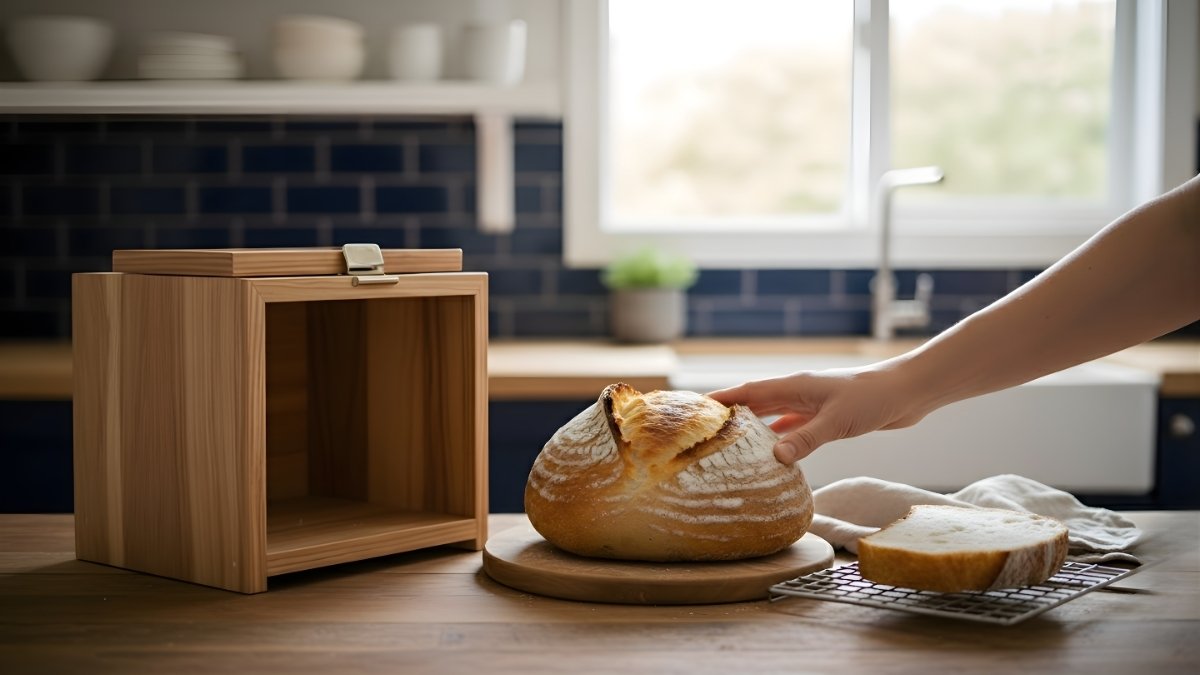If you love fresh, homemade bread, you know the struggle it’s perfect on day one, decent on day two, and by day three, it’s dry or hard as a rock. Most people wrap bread in plastic or fabric bags, but both have downsides. Plastic traps moisture and causes mold, while fabric lets too much air in, drying the loaf out.
So how do bakers keep bread soft and fresh for days without using either? There’s a simple, clever trick they swear by and it works like magic.
What Is the Baker’s Secret Hack
The secret is simple: store your bread with a small piece of apple or celery in an airtight container or bread box.
That’s it no plastic wrap, no cloth bag, no fancy storage tools. The natural moisture from the apple or celery keeps the air inside the container slightly humid, which helps your bread stay soft without getting soggy or moldy. It’s a trick professional bakers have used for years to maintain the perfect texture in artisan loaves.
How This Bread Storage Hack Works – Explained Simply
Bread loses moisture over time because of a process called starch retrogradatio the starch molecules in the bread crystallize as it cools and sits, causing it to harden. Keeping just the right level of humidity around the bread slows this process down.
| Ingredient | Role in Bread Freshness | How It Helps |
|---|---|---|
| Apple slice | Adds gentle moisture | Keeps bread soft without wet spots |
| Celery stick | Maintains steady humidity | Prevents drying while avoiding mold |
| Airtight container | Traps ideal environment | Keeps external air and bacteria out |
Unlike plastic bags that create too much condensation, this method balances moisture naturally, extending the bread’s freshness by up to three or four days.
When Where to Use This Hack for Best Results
Use this method as soon as your bread cools completely usually about one to two hours after baking. If you store it while it’s still warm, steam can build up and make it soggy.
You can use this trick with most types of bread, including:
- Homemade sourdough
- Whole wheat loaves
- Baguettes and rolls
- Sandwich bread
Keep your bread container in a cool, dry place, away from direct sunlight. Avoid the fridge cold temperatures actually speed up staling, even though they delay mold growth.
Common Mistakes With Bread Storage
- Storing bread in the fridge — This is the most common mistake. It might stop mold, but it makes bread go stale twice as fast.
- Leaving the apple or celery for too long — Replace the piece every 1–2 days to keep it fresh and avoid unwanted smells.
- Using too much moisture — One small slice or stick is enough. More can make the bread damp.
- Not sealing the container properly — Air exposure is what causes bread to dry out, so a tight seal is key.
Best Tips to Make the Most of This Natural Bread Storage Trick
- Use a ceramic or metal bread box: These maintain temperature and humidity better than plastic containers.
- Freeze for long-term storage: Slice the loaf, wrap it in paper, and freeze. You can reheat slices in a toaster or oven when needed.
- Keep crusty breads separate: For baguettes or artisan loaves, loosely cover instead of sealing to preserve the crust’s crunch.
- Add rice for balance: If your environment is very humid, place a small dish of rice inside the container to absorb excess moisture.
These small tweaks can extend the life of your bread naturally while keeping that just-baked texture.
Conclusion
The baker’s secret to keeping bread fresh without plastic or fabric is surprisingly simple a slice of apple or celery in a sealed container. It maintains the perfect balance of moisture and air, helping bread stay soft, flavorful, and delicious for days.
Not only does this trick reduce waste, but it also saves you time and money. Try it once, and you’ll never go back to plastic bags again.
FAQs
When should I add the apple or celery to the bread container?
Add it once the bread has completely cooled, usually one to two hours after baking.
What type of container works best for this trick?
An airtight ceramic or metal bread box works best, but a well-sealed plastic or glass container also does the job.
Why does celery or apple keep bread soft?
They release gentle, natural moisture that slows down the drying process without making the bread wet.
How often should I replace the apple or celery?
Every 1–2 days to keep it fresh and prevent unwanted odors or mold.
Can I use this trick for store-bought bread?
Yes, it works just as well for store-bought loaves, especially those without preservatives.




